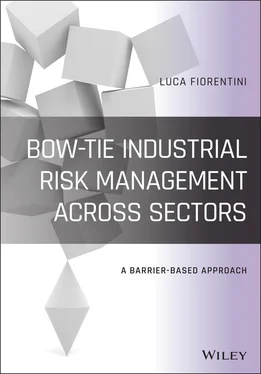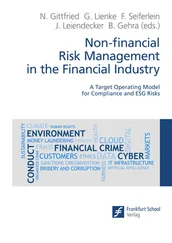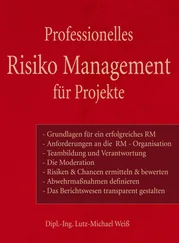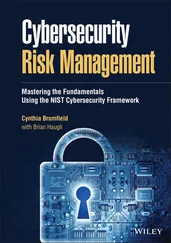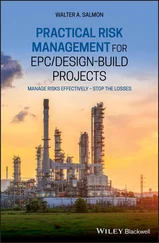A heartfelt thank you to CGE Risk for the valuable support offered in the writing of this book, for the many examples and for their beautiful images that make us appreciate even more the beauty of the Bow‐Tie, as well as its usefulness for use in various business sectors. For this reason, as I am unable to thank the entire CGE Risk team by name, my thanks go in particular to Jeroen van Dommelen, Iris Curfs, and Geert van Loopik, who I ask to extend my recognition to their valuable collaborators for everything we have done together so far and for what we will do in the future. Barrier‐based methodologies discussed in this volume are challenging to apply to real‐world cases where complexity should be described; CGE Risk is the leader in barrier‐based software tools supporting these methods, giving the users a number of possibilities to be successful in engaging risk assessment in order to focus on the elements, on the relationships and, of course, on the outcomes of the risk assessment rather than on the drawing part that, in some cases, with traditional non‐risk‐oriented tools, could be a cumbersome experience, with the ability to also obtain a pretty advanced user interaction and clear colourful diagrams. I thank CGE Risk very much for having granted me the chance to use their tools to develop the pictures and examples of this book, giving the reader a uniform and consistent visual experience from the principles to the explanations to the examples and case studies. Their tools deserve a try!
Finally, my thanks go to those who have contributed to providing valuable examples of the methodologies described in this book. These are professionals from different business contexts, demonstrating the universal applicability of the methods discussed here. Therefore, I would like to thank: Bernardino Chiaia and Valerio De Biagi from Politecnico di Torino; Ian Travers from Ian Travers Limited; Jasper Smit from Slice; Tor Inge Saetre from AdeptSolutions; Salvatore Tafaro from the Italian National Fire Brigade; Emily Harbottle from Harbottle Hughes Risk Management; Ed Janseen; Arthur Groot, Process Safety Expert – Royal Haskoning DHV; David Hatch, process safety expert; Orazio Cassiani, risk manager in the healthcare sector; Prof. Luca Marmo from Politecnico di Torino; Paul Heimplaetzer; Annalisa Contos from Atom Consulting; Domenico Castaldo from TIM S.p.A.; Luca Toncelli and Francesco Fanelli from Human Factor Italia. I thank them very much for their efforts in giving some examples of barrier‐based methods from their own sectors, giving valuable impressive content of real applications that enrich the volume in a way the reader can find immediate applications of the risk terms and definitions, principles from different perspectives, allowing also to take some ideas out the pages to start creating their first Bow‐Ties or benchmark those they already have with some of the greatest barrier‐based risk management experts from different countries I had the chance to meet during my professional experiences.
Конец ознакомительного фрагмента.
Текст предоставлен ООО «ЛитРес».
Прочитайте эту книгу целиком, купив полную легальную версию на ЛитРес.
Безопасно оплатить книгу можно банковской картой Visa, MasterCard, Maestro, со счета мобильного телефона, с платежного терминала, в салоне МТС или Связной, через PayPal, WebMoney, Яндекс.Деньги, QIWI Кошелек, бонусными картами или другим удобным Вам способом.
